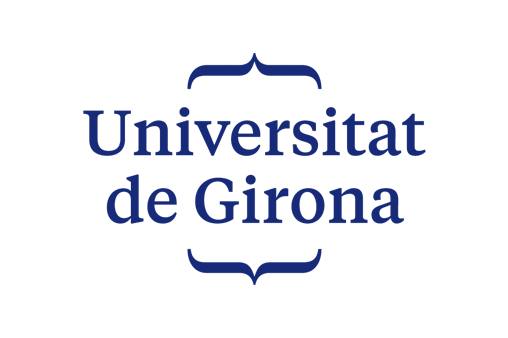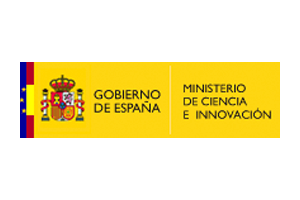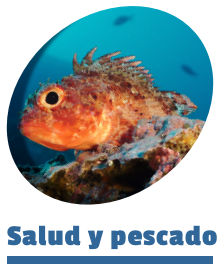Workshop Salud y Pescado
Workshop "Marine Exploited Fish Health"
This workshop, organized by the Research Group “Biologia Animal-Ictiologia" and financed by the Spanish Ministry of Science and Innovation (Acción complementaria CTM2009-07342-E), was held at the University of Girona on the 7th of July 2010.
A. OBJECTIVES OF THE WORKSHOP
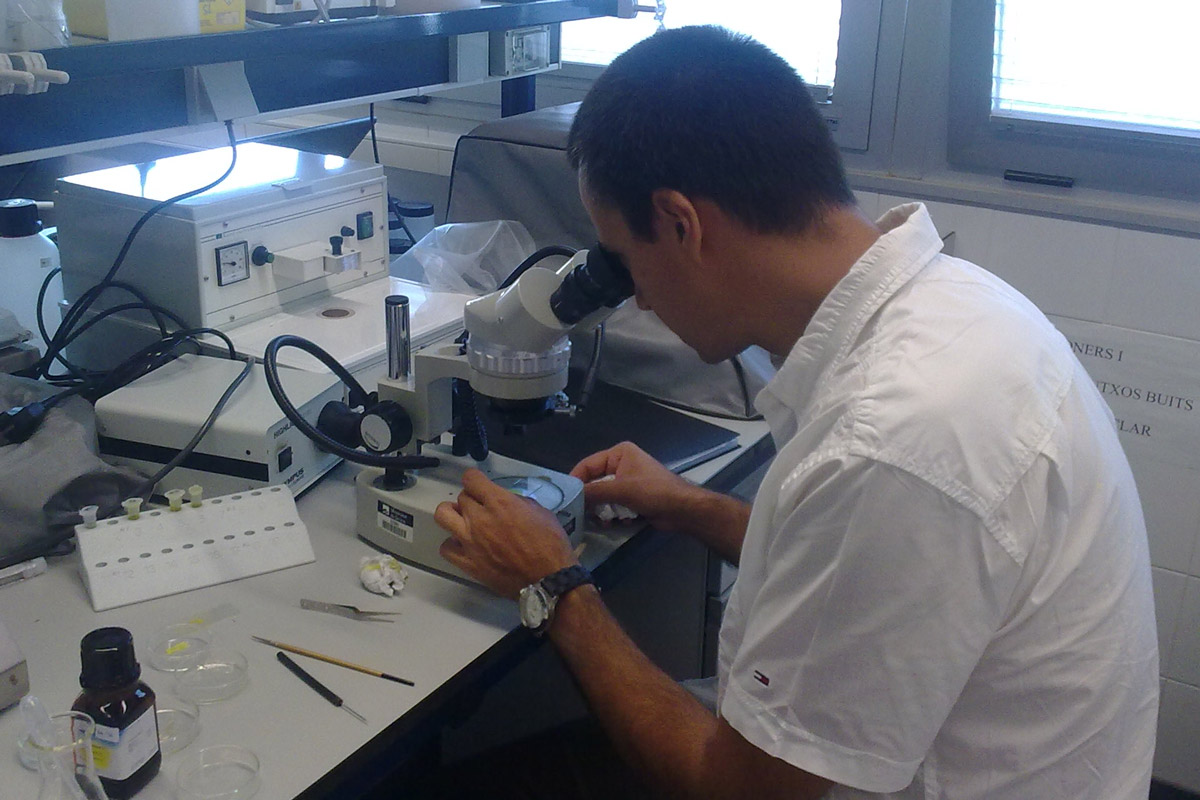
This workshop aimed at opening up new directions in marine fish health research with a potential impact on the assessment and management of exploited resources. It brought together eight marine scientists from four different countries (Spain, France, Italy and Ukraine) with different expertise in the field of fish health (parasites, condition indices and reproduction) to discuss on recent advances in that field, the gaps in knowledge, the future research needs and the use of fish health as indicator of population conditions from an ecological–fishery perspective. Additionally, the workshop allowed participants to outline future research perspectives that could allow a joint interdisciplinary effort for the investigation of fish health.
Table 1. List of participating experts
| Name | Institution | Research topics |
|---|---|---|
| Georgiy Shulman | Institute of Biology of the Southern Seas, Ukraine | Fish condition |
| Simonetta Mattiucci | University of Rome, Italy | Parasitology |
| Betty Faliex | University of Perpignan, France | Parasitology |
| Pierre Sasal | CNRS, Moorea, France | Parasitology |
| Toni Raga | University of Valencia, Spain | Parasitology |
| Josep Lloret | University of Girona, Spain | Fish condition |
| Margarida Casadevall | University of Girona, Spain | Fish reproduction |
| Marta Muñoz | University of Girona, Spain | Fish reproduction |
B. STRUCTURE OF THE WORKSHOP
Topic 1: State of the art
.jpg)
The participants discussed the biggest unknowns in understanding health of marine exploited species, the impact of parasitism on fish condition, the influence of fish condition on reproduction of fishes and the relationships between host genetic diversity and parasitic load. In particular, the participants:
- Reviewed the importance to conduct more detailed studies on fish health (condition, parasitism and reproduction) from an ecological and fishery perspective, the biggest unknowns in understanding health of marine exploited species and the necessity to conduct more interdisciplinary studies in these topics.
- Reviewed how fish parasites can affect fish condition and reproduction of exploited marine species and discussed that a high parasitic load or diversity can be also indicators of good ecosystem health.
- Reviewed how fish parasites can affect condition and the reproductive potential of exploited marine species.
- Compared the increases of parasitic load in exploited marine species over the last years in particular Mediterranean areas (e.g. Catalan Sea) to other areas where this trend has not been observed (Gulf of Lions, waters around Italy, Black Sea), and the consequences that this increase may have on fish stocks.
- Discussed about the main factors that could be behind the temporal trends and regional differences, including pollution, sea warming and a possible increase in the abundance of marine mammals, as well as the effect of fisheries itself as an explicative factor (e.g. through discards or trough a disruption of the food webs).
- Reviewed the relationship between host (exploited fish) genetic diversity (variability) and parasitic load, and how fisheries are altering this relationship.
Topic 2: Methodological aspects
Different approaches used to evaluate health of fishes were presented. The topic discussed the pros and cons of the different methods and indicators to estimate fish parasitism, condition and reproductive potential, and looked for the new methods that are being developed to evaluate these variables (e.g. molecular techniques). The topic also discussed on the existing long-term databases on fish condition and parasitism regarding the possibility of developing standardized inventories to make comparisons possible. In particular, the discussion considered the following aspects:
- The participants discussed about the methods to efficiently (time/cost) evaluate the parasitism, condition and reproductive potential of fishes for fisheries management purposes
- The development of an inventory of long-term databases on fish condition, parasites and reproduction for fisheries management purposes
- The best time (season, life or reproductive stage, etc) to analyse fish condition was discussed
Topic 3: Application of health indicators in the management of marine resources
This topic discussed on the possible applications of fish health indicators into the assessment and management of fish populations, and how fish health variables could be better integrated in fish population models. A major consideration of the topic was how fish condition indices and fish parasitism can be used as population and ecosystem status indicators. The discussion considered the following aspects:
- How the integrated analysis and monitoring of fish health indicators could contribute to improve stock assessment and management, and how these indicators could be incorporated in stock assessment models (through e.g. natural mortality).
- The use of fish health indices as indicators of ecosystem conditions.
Topic 4: Future research
During this session, the main research priorities and future available funding opportunities were discussed to keep the activities of the group growing. The participants settled specific ideas for future research collaboration in the European area. The discussion considered the following aspects:
- The research priorities in the field of fish health from an ecological/fishery perspective
- The cooperative actions and the funding opportunities available
C. MAIN CONCLUSIONS AND ACHIEVEMENTS OF THE WORKSHOP
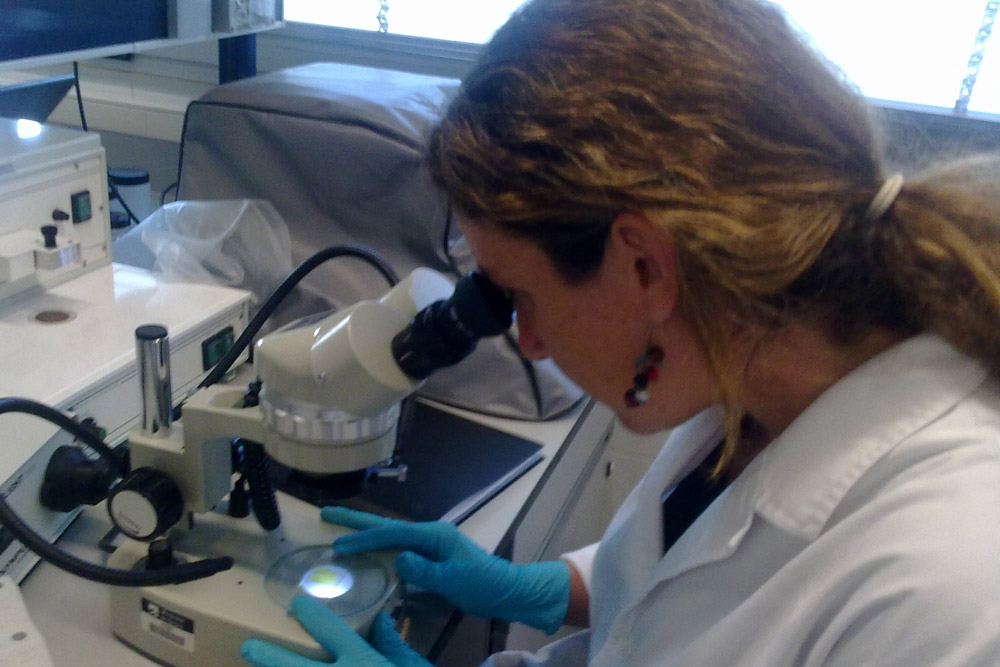
- The participants stressed the necessity to conduct more detailed studies on fish health from an ecological and fishery perspective. The participants agreed that the term “Fish health” includes several aspects such as parasitism, energy reserves and reproduction and other variables such as hematocrit, hormones, tumours, bacteria, virus, etc. However, for fishery management purposes, we need to concentrate on these variables of fish health that are better to sample in the long term in terms of time and cost. For that reason, parasites, energy reserves and reproductive potential of fishes are selected as the best candidate indicators of fish health for fisheries management purposes.
- With the exception of some few cases (e.g. monitoring of fish parasites in Catalonia by the veterinarian services, lipid analysis of some fish species in the Black Sea), no regular monitoring is conducted in the Mediterranean. Furthermore, in most studies the focus of attention is on individuals, not the populations (which are the basis for fisheries management). The participants agreed there is an urgent need to conduct monitoring analyses of parasites, energy reserves and reproductive potential of the most important exploited marine fishes at a population level, in order to have long term data on energy reserves, parasitism and reproductive potential indicators. The participants also agreed that experimental analyses in the laboratory with infested and non-infested fish are needed.The species considered should be both demersal and pelagic, particularly those allowing experiments in the laboratory (i.e. coastal species) and those evaluated by the European Commission in Mediterranean waters at present: Merluccius Merluccius, Mullus barbatus, M. surmuletus, Sardina pilchardus, Engraulis encrasicolus, Aristeus antennatus, Parapenaeus longirostris, Neprhops norwegicus, Solea vulgaris).
1. Fish parasites: the participants summarized the interest of these studies in relation to fisheries management in the following aspects.
a. The utility of fish parasites to identify fish stocks. Parasites can thus be used as biological tags in fish stock characterization.
b. The impact of fish parasites on fish stocks, whether it is through the effect on energy reserves, reproduction or natural mortality (M).
i. Regarding energy reserves, although theoretically the effect of parasites on fish energy reserves should be negative, in practice the relationship can be negative (when fish are intermediate hosts: transmission of parasites) or positive (when fish are final hosts: food acquisition). Sometimes even there is not a significant relationship between both variables because the indicators of energy reserves are not good enough (e.g. use of simple morphometric indices). In this sense, the impact of parasites on lipids of Engraulis encrasicolus was discussed.
ii. Regarding reproduction, participants discussed the impact of parasites on sex reversal, egg loss, fecundity and gonadosomatic index (GSI). In this regard, the impact of parasites on reproduction of Anguilla anguilla was discussed.
iii. Regarding natural mortality (M,= the negative impact is being tested in Mola mola. The participants also discussed on the fact that what is bad for the individual (e.g. a parasite that kills an individual fish) is not necessarily bad for the population (after this individual fish is killed, the rest may have more food to feed on)
c. The utility of fish parasites as biological indicators of marine trophic webs and of overfishing (particularly overfishing of definitive hosts).
d. Study of host-parasite co-phylogenetic aspects (Xiphias gladius was shown as example)
e. Although parasites are always thought (by definition) to have negative effects on species, the participants pointed out that they can also act as beneficial organisms for the ecosystem and its diversity can be indicator of good ecosystem health.
f. The possible increases in parasitic loads in certain areas (e.g. Catalonia) should be studied in deep, as well as the possible causes (sea warming, increase of pollution or in the abundance of marine mammals) and consequences on fish stocks. Despite the possible economic and ecological implications, these ecological aspects of fish parasitism have been seldom studied.
1. Fish energy reserves (fish condition indices): the participants summarized the interest of these studies in relation to fisheries management in 3 aspects:
a. Energy reserves, particularly lipids, are an important attribute of fishes because they have a large influence on growth, reproduction and survival. Low energy reserves may lower the chances of survival, leading to an increase of natural mortality. Starvation due to exhaustion of energy reserves, particularly during the non-feeding and reproductive periods, weakens fishes and renders them more susceptible to predation and fishery, diseases and to a variety of environmental stressors. Inadequate reserves have been implicated in the reduced reproductive potential of several fish species through reduced fecundity and quality of eggs and larvae or delayed maturation (reviewed by Lambert et al. 2003). A reduction in fish energy reserves does not only affect the own population success but may impact as well on the reproductive output of top predators.
b. From all indicators of energy reserves, total lipids is the most widely used because it is easier and less expensive to determine than other indicators such as omega-3 fatty acids or glycogen (which are, however, better indicators than total lipids, particularly in some fish groups such as gadoids, where glycogen is as very import source of energy, or pelagic fishes, where omega-3 fatty acids are very important). Furthermore, total lipids are usually correlated negatively with water content (once this relationship has been established, the total lipids can be determined easily from the water content). The use of physiological indices such as liver index can be suitable for those species storing energy in the liver. The use of simple morphometric indices such as Fulton’s K and Le Cren relative condition factor Kn should be avoided and only used as a first proxy of fish energy reserves in the long term when great numbers of length and weight data exists.
c. The best time for collecting condition data will depend on the species but in a first sight should consider the maximum values of energy reserves, which usually will be just before reproduction and/or end of the feeding period (if it exists, e.g. anchovy and sardine). It should be also evaluated during spawning.
5. Fish reproductive potential: The participants summarized the interest of these studies in relation to fisheries management in 2 aspects:
a) The reproductive potential of fishes is increasingly being used for fisheries management purposes. Different networks and groups of fisheries biologists working on reproductive potential of fishes such as the Northwest Atlantic Fisheries Organization (NAFO) working group on reproductive potential of fishes and FRESH (Fish Reproduction and Fisheries; cost action; www.fresh-cost.org) have been constructed in the last few years.
b) It is a key aspect in determining the success of the population. Several indicators have been proposed, from simple ones (gonadosomatic index) to more complex ones (atresia, fecundity, sex reversal). These indices should be considered on a species basis, and taking into account their dependence on parental health (parasites and energy reserves)
6. Future collaborations. The participants agreed to follow the cooperative work in the establishment of a network of fishery scientists working on fish health for fisheries management purposes in the Mediterranean and the Black Seas. The network will focus on parasites, energy reserves (condition indices) and reproduction of exploited marine fishes.Although the embryo of this network is made by the participants in the workshop held in Girona, the network should be enlarged with the incorporation of new scientists working in these topics from a fishery perspective. In order to make this network larger and well settled, the participants of the workshop agreed to search for further funding such as European Science Foundation (ESF) exploratory workshops or Marie Curie Initial Training Networks.
For more information please contact Josep Lloret
Links to other scientific initiatives on Fish Health:
Fish Health Section of the American Fisheries Society


